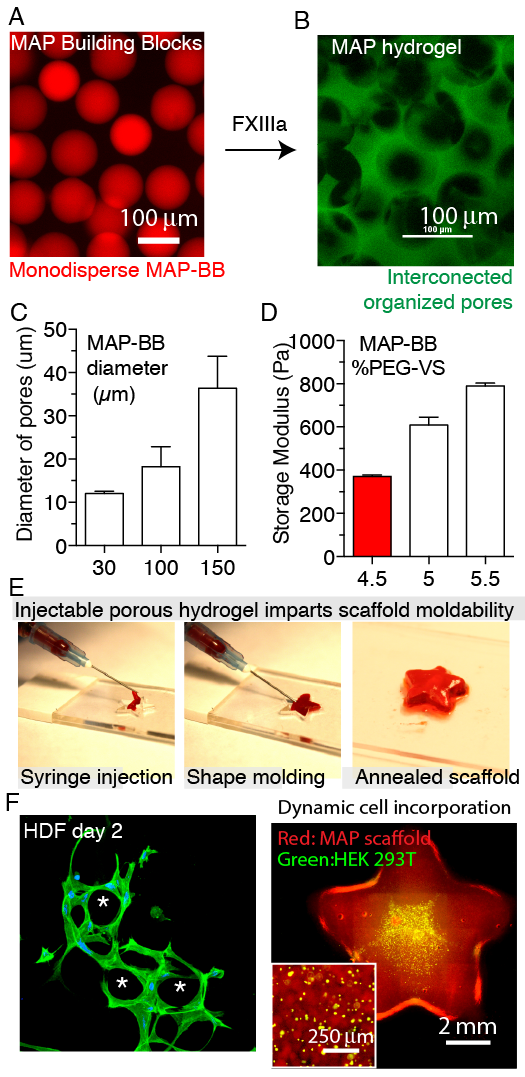Injectable PlayFoam like materials for tissue repair
-
1
University of California Los Angeles, Chemical and Biomolecular Engineering, United States
-
2
University of California Los Angeles, Bioengineering, United States
-
3
University of California Los Angeles, Department of Medicine, Dermatology, United States
Stroke is the only major disease without an effective treatment and is the main cause of adult disability in industrialized nations. After ischemic stroke both the brain vasculature and nerves are severely damaged leading to the neurological deficit that causes disability. Better patient prognosis has been linked to increased angiogenesis and overall re-perfusion of the stroke area, indicating that angiogenesis is a critical step towards reducing the neurological deficit and brain repair. Further, active angiogenesis in the peri-infarct zone has been linked to the migration of stem cells from the sub ventricular zone towards the lesion, generating a neurovascular niche. We have designed injectable scaffolds that can further enhance agiogenesis.


However, the hydrogel material utilized for the delivery of our therapeutic drugs was degraded too quickly in vivo. To solve this problem, we have created a new class of injectable biomaterial that circumvents this challenge by providing an interconnected microporous network for simultaneous tissue reformation and material degradation[1]. We assemble monodisperse micro-gel building blocks into an interconnected microporous annealed particle (MAP) scaffold.

Through microfluidic formation, we tailor the chemical and physical properties of the building blocks, providing downstream control of the physical and chemical properties of the assembled MAP scaffold. In vitro, cells incorporated during MAP scaffold formation proliferated and formed extensive 3D networks. In vivo we show enhanced wound closure and cellular infiltration[1].
References:
[1] Griffin DR, Weaver WM, Scumpia PO, Di Carlo D, Segura T. Accelerated wound healing by injectable microporous gel scaffolds assembled from annealed building blocks. Nat Mater. 2015 Jul;14(7):737-44. doi: 10.1038/nmat4294. Epub 2015 Jun 1.
Keywords:
biomaterial,
Scaffold,
Tissue Regeneration,
3D scaffold
Conference:
10th World Biomaterials Congress, Montréal, Canada, 17 May - 22 May, 2016.
Presentation Type:
New Frontier Oral
Topic:
Regenerative medicine: biomaterials for control of tissue induction
Citation:
Segura
T
(2016). Injectable PlayFoam like materials for tissue repair.
Front. Bioeng. Biotechnol.
Conference Abstract:
10th World Biomaterials Congress.
doi: 10.3389/conf.FBIOE.2016.01.00709
Copyright:
The abstracts in this collection have not been subject to any Frontiers peer review or checks, and are not endorsed by Frontiers.
They are made available through the Frontiers publishing platform as a service to conference organizers and presenters.
The copyright in the individual abstracts is owned by the author of each abstract or his/her employer unless otherwise stated.
Each abstract, as well as the collection of abstracts, are published under a Creative Commons CC-BY 4.0 (attribution) licence (https://creativecommons.org/licenses/by/4.0/) and may thus be reproduced, translated, adapted and be the subject of derivative works provided the authors and Frontiers are attributed.
For Frontiers’ terms and conditions please see https://www.frontiersin.org/legal/terms-and-conditions.
Received:
27 Mar 2016;
Published Online:
30 Mar 2016.